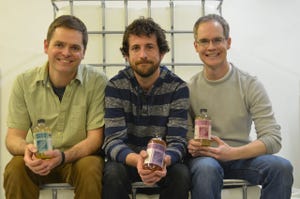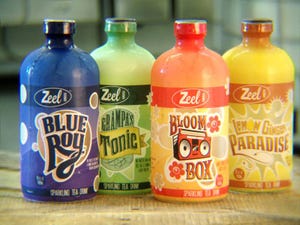How Upstart Kombucha rebranded to appeal to naturalsHow Upstart Kombucha rebranded to appeal to naturals
In a maturing category like kombucha, standout packaging matters. Hear how one entrepreneur learned what a rebrand takes.


It took thousands of years to perfect the kombucha brewing process, but making this ancient, fermented tea came naturally for entrepreneur Josh Garner.
A brewer at heart, Garner first proved his chops crafting microbrews for a small, Oregon-based brewery. He later turned his attention to brewing kombucha. “In my mid-twenties I quit drinking, but I really missed the brewing process,” explains Garner. “Kombucha is all the fun, but without the hangover.”
Indeed, with burgeoning retail sales and growing enthusiasm about locally made kombucha, it’s clear consumers think this fizzy, ancient beverage is pretty fun, too.
After moving to Boulder, Colorado, to pursue a job in the city’s booming software market, Josh met Brian McKinney and Caleb Hanson—friends who shared his enthusiasm for kombucha. Garner applied the beer brewing techniques he learned in Oregon to a few batches made with a neighbor’s SCOBY (the mushroom-like patty that ferments the tea, and stands for Symbiotic Colony of Bacteria and Yeast).
Though there isn’t a standard kombucha style, many companies first brew a base kombucha using tea, sugar, and SCOBY, and then add various fruit juices for flavor afterwards. In contrast, Garner prefers to make kombucha with interesting ingredients like rose buds, rosemary, sage, and more while it brews—a process that yields more pronounced, seasoned flavor. “For me, the focus has always been to use really good tea and ingredients … I like to layer flavors from the start,” he says.
The kombucha was superb, and it was a hit among their friends and families. Shortly later, they founded BCJ Beverage Company, and launched Zeel Kombucha in the Rocky Mountain region (dubbed for the group’s “zeal” to create a great product and share with the people that keep them going).
 Zeel Kombucha came in bright, punchy packaging, and each of the four flavors was named with cheeky monikers such as Blue Roy (blueberry rooibos), Grandpa’s Tonic (refreshing and herbal), Bloom Box (light floral notes), and Lemon Ginger Paradise (gingery and peppery). Local natural products retailers and cafes adored the stuff.
Zeel Kombucha came in bright, punchy packaging, and each of the four flavors was named with cheeky monikers such as Blue Roy (blueberry rooibos), Grandpa’s Tonic (refreshing and herbal), Bloom Box (light floral notes), and Lemon Ginger Paradise (gingery and peppery). Local natural products retailers and cafes adored the stuff.
But after several months, the trio realized that their Technicolor packaging didn’t resonate with seasoned kombucha drinkers—the folks who could become their brand’s core fans—it seemed too conventional. “We weren’t trying to enter the mainstream market,” says Garner. “We just wanted to make sure we didn’t turn anyone away. Kombucha is good for everyone, and we wanted our packaging to reflect that.” But a change was needed in order to compete for the organic kale-eating crowd.
A rebrand ensued.
Designed to both maintain the energy of Zeel’s former packaging, but also appeal to a more “natural” consumer, Upstart Kombucha was born. The kombucha flavors didn’t change, but they adopted more sophisticated, clear names. For example, Grandpa’s Tonic became Herbal Green, and the confusing Bloom Box became Rose Bud. Whereas Zeel’s packaging was shrink-wrapped around the entire bottle, consumers can now see the color of each Upstart Kombucha flavor—a move that hints at the company’s use of high-quality, mostly organic ingredients.
“The kombucha crowd is such as cool, small community,” says Garner. “It's fun to talk about—loyal kombucha drinkers love to turn other people onto it.” Though the rebrand is just hitting store shelves now, Upstart’s fresh, ahem, start, is surely a harbinger of more kombucha sales to come.
About the Author
You May Also Like





